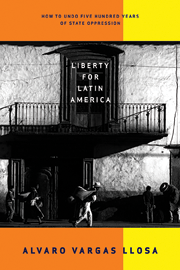LIMA, Peru—Latin America’s big question is whether the political obstacles, which need to be removed in order for the major socioeconomic transformation currently going on in the region to be completed, will continue to exist. The coming year could be decisive.
The four places to watch in 2011 are Brazil, Peru, Argentina and Venezuela.
In January, Dilma Rousseff will assume power as Brazilian president. Will she be able to step out of the shadow of her predecessor, Luiz Inacio Lula da Silva, by pushing for further liberalization and reining in the demagogic penchant that her country has exhibited of late in its conduct of foreign policy? Brazil has been siding with autocrats around the world as a way of marking its territory vis-a-vis the United States. This needs to stop.
The first round of Peru’s presidential elections will take place in April. The dizzying pace of its economy has put the country on a path to development. If voters opt to reverse the general trajectory of the last decade, they will deal a major blow to this progress. By and large, most candidates support the open, competitive economic model and the rule of law, although reform of the corrupt and inefficient state, the 800-pound gorilla in the room, is not high on anybody’s list. With Peru having an annual growth rate of 8 percent, the candidates feel disinclined to rustle too many feathers.
Peru faces two challenges. One comes from the left and involves the populist nationalists, who have begun to distance themselves from Venezuela’s Hugo Chavez but still distrust globalization. The other one comes from the right: The heirs of Alberto Fujimori’s dictatorship are seeking to return to power; they would bring back part of the team that presided over one of Peru’s most unsavory periods of the 20th century. So far, neither option seems strong enough to prevail.
Argentina will be holding presidential elections in October—a great occasion to put an end to the Kirchner era. President Cristina Kirchner has benefited from the outpouring of sympathy following the death of her husband, former President Nestor Kirchner, and the fact that the administration has not entirely bankrupted the country. Thanks in part to Asian demand and in part to the technological revolution accomplished by private farmers, the economy has proved to be resilient in the face of expropriations, high taxation and political meddling.
A turnaround in Argentina, a pivotal nation in South America, would give a major shot in the arm to Latin America’s modernization process.
Venezuela will be the other place to watch. Following his defeat in the legislative elections, Chavez has been busy trying to pre-empt the new National Assembly that will be seated in January with a sizable opposition bloc. He has awarded himself decree powers, gutting the incoming legislature’s prerogatives. However, the Assembly was never about legislating Venezuela out of the dictator’s grip. It is about the resistance movement conquering more spaces toward the presidential elections of 2012. What happens in those elections will hang on what happens in 2011—i.e., on whether the opposition thwarts Chavez’s attempts to bully and divide it, and picks a uniting candidate at the end of the coming year.
These political dynamics give Latin America a chance to make the modernization process irreversible. The continent’s rate of economic growth this year has been 5 percent on average, well above that of United States and Europe; its debt amounts to barely 25 percent of the region’s gross domestic product; its banks are well capitalized; trade among neighboring countries is at unprecedented volumes; and China, a major new market, now imports more than $400 billion from the area, 40 times more than in 1990. Finally, Latin American multinational corporations—the “Multilatinas”—are getting noticed for their performance.
The expansion of the middle class is visible almost everywhere. Unlike the 1970s, when the middle class dilated in connection with the explosion of government bureaucracy under the model of economic nationalism, today’s enlargement is linked to the market and has to do in large part with new businesses that service other, bigger companies.
The socioeconomic changes need a much greater institutional underpinning and further reform if Latin America is to conquer poverty and reach a critical mass that will create around its new model a “cordon sanitaire” against autocratic temptations. In 2011, the four nations to watch—Brazil, Peru, Argentina and Venezuela—will give us a hint as to how close Latin Americans are to making the definitive leap forward.












